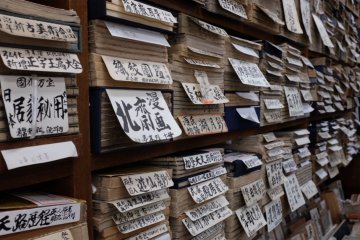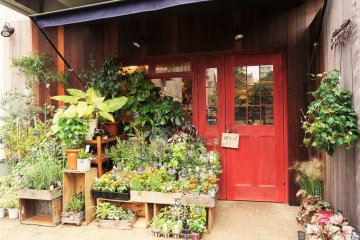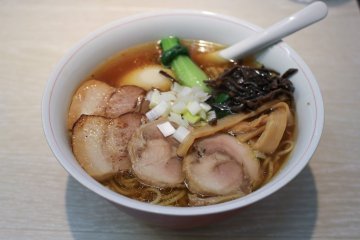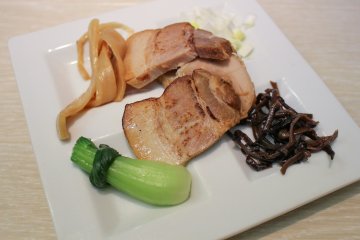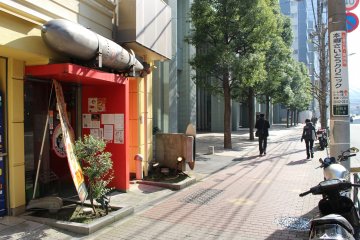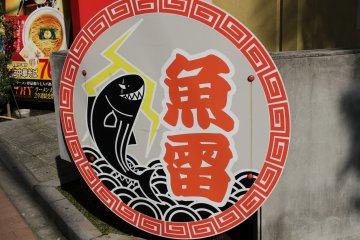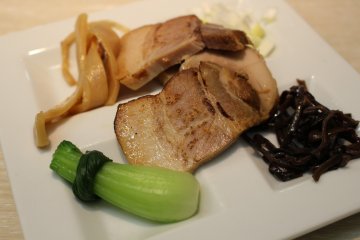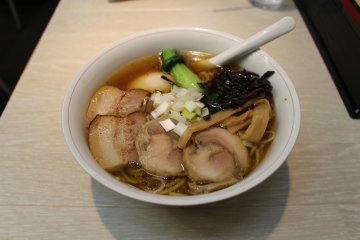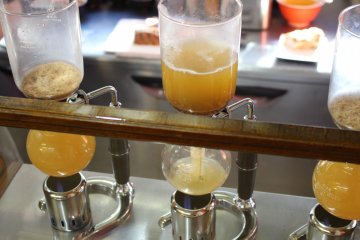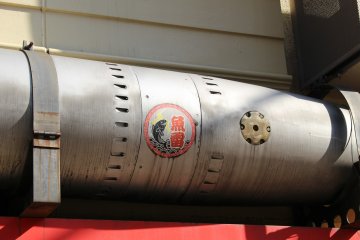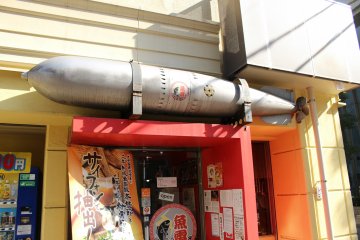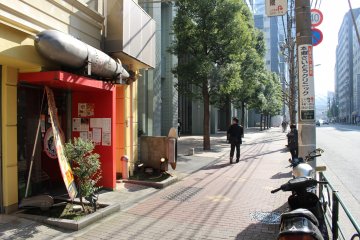Gyorai (本枯中華そば 魚雷) is a unique ramen shop in Tokyo's Bunkyo ward that sets itself apart from most others. They opened in 2010 and is operated by the Bond of Hearts group – a Nagano-based collective slowly expanding its reach across Kanto.
First up—and most notably—Gyorai's soup preparation method involves the use of coffee siphons. Owner Tsukada-san's innovative approach ensures maximum smokey flavour from the dried bonito/tuna fish is extracted into the soup right before it is served to the customer.

Secondly, this ramen bowl comes 'deconstructed' – choose your toppings which then arrive separately, allowing you to create your own final touch. It's rare the customer gets a say on the presentation of any dish in Japan, which makes it a great selling point here in my mind.
Depending on your selection at the ticket machine you'll get to choose 3 toppings (alongside green onion) from a list of: chicken, char siu pork, menma, Nemagaritake bamboo, quails egg, nori, kikurage mushrooms, Naruto-maki and Bok Choy.
Beside the regular ramen option (¥730), you can choose upgrade to a Tokusei (deluxe) (¥930) or Aburi (grill) (¥1,030) version. Deluxe comes with 2 slices each of chicken and pork plus an ajitama egg, whilst the grill comes with 3 slices each of chicken and pork. All this with then the choice of 3 more toppings as per usual on the side!

Whilst Gyorai is most well-known for its original preparation method, under the surface there is just as much substance here as style. The soup uses Aomori jidori chicken, Akaniwatori (chicken from Kagoshima) and pork in a collagen soup mix, with a further blend of kombu seaweed and various fish flavours (inc. bonito and mackerel) combining alongside to make a strong double soup combination.
The smokey dried bonito is high grade, aged bonito from Makurazaki in Kyushu's Kagoshima. The siphon process extracts maximum flavour into the soup, which is really noticeable in the final bowl and combines well with the other flavours.
Noodles are straight, medium-thickness, and are handmade using Haruyokoi wheat from Hokkaido prefecture, and natural Mongolian lye water in the preparation method.






